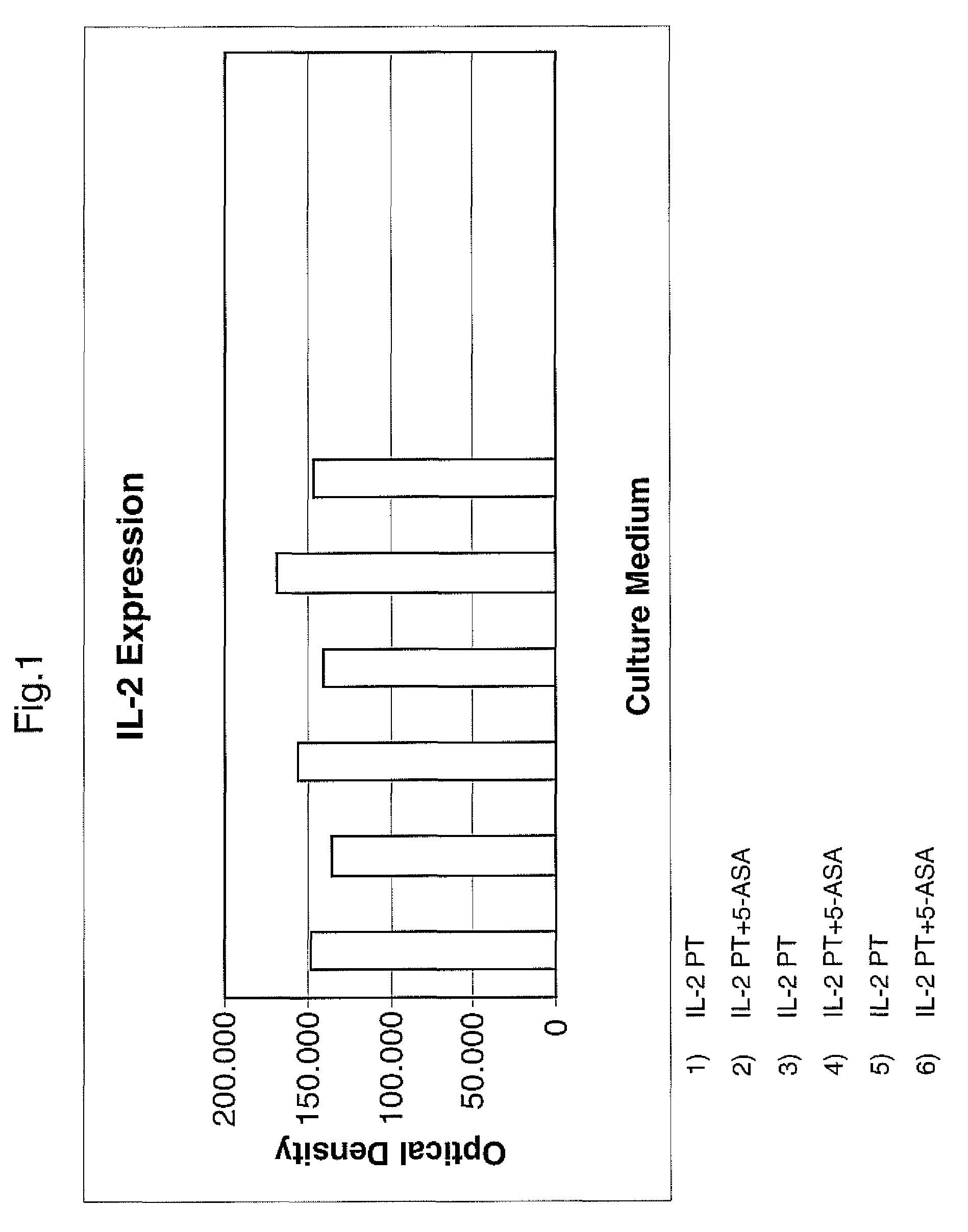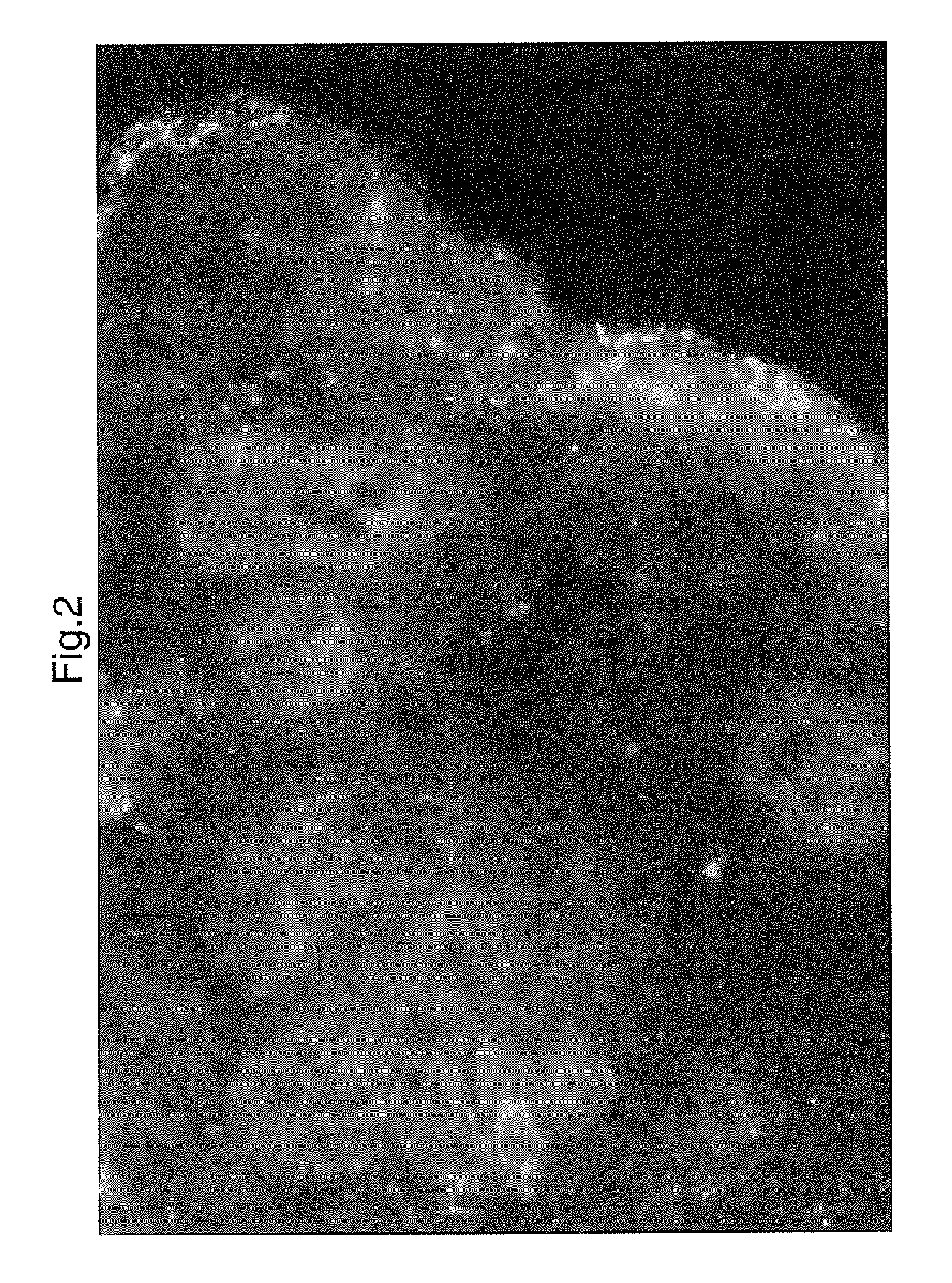Compounds for the selective treatment of the intestinal immuno-inflammatory component of the celiac disease
a technology for immune-inflammatory components and celiac diseases, applied in the direction of immunological disorders, drug compositions, peptide/protein ingredients, etc., can solve the problems of gastrointestinal lymphoma or carcinoma risk, calcium deficiency, bone weakening, etc., and achieve the effect of reducing the production of inflammatory cytokines
- Summary
- Abstract
- Description
- Claims
- Application Information
AI Technical Summary
Benefits of technology
Problems solved by technology
Method used
Image
Examples
example 1
[0084]The effect of mesalazine, one of the preferred compound of the invention, on the inflammatory component observed in the celiac disease, was evaluated.
[0085]To this end, 16 subjects in the active stage of the disease and 6 patients in clinical remission stage on a gluten-free diet were selected.
[0086]5 biopsy fragments per each study subject were taken by EGDS examination.
[0087]Each fragment of intestinal mucosa was placed in culture in a suitable medium, both with and without Mesalazine (5ASA).
[0088]The following was then observed in culture liquids:
[0089]the level of cytokines released in the different culture media
[0090]the amount of the same cytokines present in the suitably homogenised biopsy mucosa.
Materials and Methods
Method
[0091]3 groups of subjects were evaluated.
[0092]The first (atrophic) group included 29 subjects with serum tests positive to antiendomysium and anti-transglutaminase antibodies, with a neo-diagnosis of celiac disease and gluten-containing diet.
[0093]T...
example 2
Gene Expression of Cytokines
[0113]The bioptic duodenal fragments taken from the patient during the gastroscopy procedure, have been placed in culture at 37° C. for 48 h in the absence and in the presence of the 5-ASA drug. After the culture, the fragments have been homogenized in a single-phase solution composed of phenol and guanidinium (Isol-RNA Lysis Reagent).
[0114]A homogenizer IKA T10-Ultra Turrax has been used for the homogenization.
[0115]All the insoluble material has been separated from the solution by centrifugation and the supernatant has been transferred to a clean test tube, to which 200 μl of chloroform per ml of Lysis has been added.
[0116]After a short mechanical shake, the samples have been left to settle for a few minutes at ambient temperature and later centrifuged at 12000 rpm for 15 minutes at 4° C. The inorganic step containing RNA has been transferred to a clean test tube.
[0117]RNA has been made precipitate by adding 500 μl of isopropyl alcohol per ml of Lysis. ...
example 3
Presence of the PPARgamma Receptor in Duodenal Epithelial Cells of Celiac Disease Patients
[0126]Peroxisome Proliferator-Activated Peceptor-gamma belongs to the superfamily of nuclear receptors, that includes receptors for estrogens, glucocorticoids, thyroid hormones, vitamin D3 and retinoic acid, as well as receptors capable of bonding different products of lipid metabolism, such as the PPAR and the LXR receptor.
[0127]Specifically, the PPAR family includes 3 subtypes (PPAR alpha, beta or delta, and gamma) with different tissue distribution and different ligands specificity.
[0128]Both PPAR gamma and alpha have been expressed in differentiated human macrophages, where they regulate the genes implicated in the inflammatory response and modulate the macrophagic differentiation.
[0129]Different PPARgamma agonists inhibit the production of inflammatory cytokines in human monocytes and reduce the genes expression for TNF-alpha, IL-6, IL-1b, iNOS, gelatinous B, scavenger receptor A and COX-2...
PUM
| Property | Measurement | Unit |
|---|---|---|
| optical density | aaaaa | aaaaa |
| optical density | aaaaa | aaaaa |
| optical density | aaaaa | aaaaa |
Abstract
Description
Claims
Application Information
 Login to View More
Login to View More - R&D
- Intellectual Property
- Life Sciences
- Materials
- Tech Scout
- Unparalleled Data Quality
- Higher Quality Content
- 60% Fewer Hallucinations
Browse by: Latest US Patents, China's latest patents, Technical Efficacy Thesaurus, Application Domain, Technology Topic, Popular Technical Reports.
© 2025 PatSnap. All rights reserved.Legal|Privacy policy|Modern Slavery Act Transparency Statement|Sitemap|About US| Contact US: help@patsnap.com



